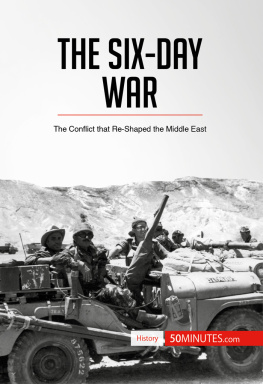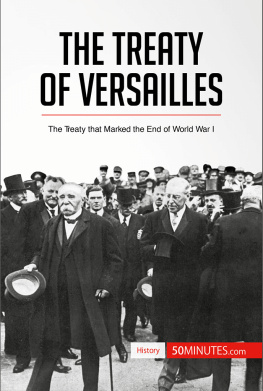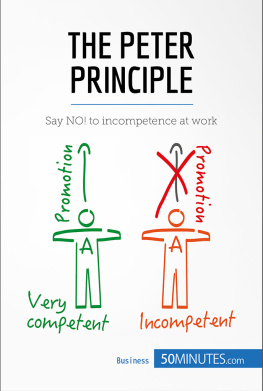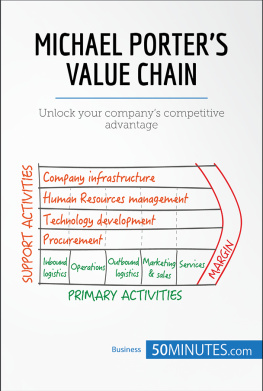50Minutes.com - The Six Day War
Here you can read online 50Minutes.com - The Six Day War full text of the book (entire story) in english for free. Download pdf and epub, get meaning, cover and reviews about this ebook. year: 2016, publisher: 50Minutes.com, genre: Politics. Description of the work, (preface) as well as reviews are available. Best literature library LitArk.com created for fans of good reading and offers a wide selection of genres:
Romance novel
Science fiction
Adventure
Detective
Science
History
Home and family
Prose
Art
Politics
Computer
Non-fiction
Religion
Business
Children
Humor
Choose a favorite category and find really read worthwhile books. Enjoy immersion in the world of imagination, feel the emotions of the characters or learn something new for yourself, make an fascinating discovery.
- Book:The Six Day War
- Author:
- Publisher:50Minutes.com
- Genre:
- Year:2016
- Rating:4 / 5
- Favourites:Add to favourites
- Your mark:
- 80
- 1
- 2
- 3
- 4
- 5
The Six Day War: summary, description and annotation
We offer to read an annotation, description, summary or preface (depends on what the author of the book "The Six Day War" wrote himself). If you haven't found the necessary information about the book — write in the comments, we will try to find it.
The Six Day War — read online for free the complete book (whole text) full work
Below is the text of the book, divided by pages. System saving the place of the last page read, allows you to conveniently read the book "The Six Day War" online for free, without having to search again every time where you left off. Put a bookmark, and you can go to the page where you finished reading at any time.
Font size:
Interval:
Bookmark:
- When: 5-10 June 1967
- Where: In the Sinai Peninsula, the West Bank and the Golan Heights (Northern Israel)
- Context: The Arab-Israeli conflict and the Israeli-Palestinian conflict
- Belligerents: Israel against Egypt, Jordan and Syria
- Commanders and leaders:
- Levi Eshkol, Israeli Prime Minister (1895-1969)
- Moshe Dayan, Israeli Defense Minister (1915-1981)
- Gamal Abdel Nasser, President of the Republic of Egypt (1918-1970)
- Outcome: Israeli victory
- Victims:
- Israeli camp: approximately 829 dead
- Egyptian camp: between 5 000 and 10 000 dead
- Jordanian camp: 700 dead and 550 taken prisoner
- Syrian camp: 450 dead and 570 taken prisoner
A major crisis in the Arab-Israeli conflict and the Israeli-Palestinian conflict, the Six-Day War began on 5 June 1967. The Israelis wanted to take preventive action against Egypt, the main military threat to the Jewish state, following the blockade of the Straits of Tiran (west of the Arabian Peninsula). The Egyptian air force was wiped out in just three hours and the Israeli army was then able to walk to the Sinai. The entire Arab world was outraged, condemned this attack and supported Egypt: Jordan and Syria joined the fight by attacking the Jewish state, and other countries, such as Lebanon and Iraq, sent material or human assistance. It should be noted that, at the time of the events, the Palestinian territories were controlled in part by Syria, Jordan and Egypt.
Six days later, after several cease-fires favoring Israel, the geopolitics of the Middle East had changed, and Israel was now in a dominant position compared to that of its Arab neighbors and saw its territory quadruple in size.
When the Six-Day War took place, tensions between the Jews and the Arabs had already existed for many years.
From the late 19 th century, the Zionist movement began gradually restoring the Jewish state in Palestine, in response to various anti-Semitic waves of violence raging in Europe. Small Jewish farming communities were formed here and there until 1901, the year in which the Zionist movement created the Jewish National Fund for the purchase of land in Palestine, which then belonged to the Ottoman Empire. Seeing no advantage in this, the Ottoman Empire decided to severely restrict the development of Jewish villages in its territory. It was not until after the First World War (1914-1918) that the situation turned around for the Zionists. With the defeat of the Ottoman Empire that had fought alongside Germany, all Arab territories i.e. Saudi, Iraq, Lebanon, Palestine and Syria fell under British and French mandates. The British, with the Balfour Declaration of 2 November 1917, were in favor of the establishment of a national home for the Jewish people in Palestine and committed themselves to contributing to the realization of this project. Jewish immigration to Palestine became increasingly significant and continued to accelerate with the rise to power of Adolf Hitler (1889-1945) and the birth of Nazism in the early 1930s.
From 1920-1967, there were three major crises of the Arab-Israeli conflict:
- the Arab revolt in Palestine (1936-1938)
- the War of Independence (1948)
- the crisis of the Suez Canal (1956).
The Arab revolt that took place in 1936 aimed to create an independent state in mandatory Palestine (i.e. under British mandate).

Arab revolt against British occupation.
After murders on both sides, a worrying sign of violence between Arabs and Jews, Britain decreed a state of emergency and imposed a curfew. Tensions continued to intensify and a general strike was organized throughout the country. The revolt gradually spread outside the borders and Syrian fighters came to stand alongside the Palestinians. Given this situation and the urgency to find a solution, the British proposed the formation of two states: the first, the Jewish state, would include Galilee (northern Israel) and the entire coastline; the second, the Palestinian state, would consist of the remaining territories annexed by Transjordan (now the West Bank). With the proposal rejected by the Arabs and by some Zionists, British policy hardened by repressing and imprisoning the principal leaders of the revolt. This first crisis still had a positive result as it allowed for the drafting of a series of laws in 1939, united under the name of the White Paper, to regulate Jewish immigration to Palestine and the purchase of Arab land by Jews.
The second crisis is what the Israelis called the War of Independence, or the Palestine War. It took place in 1948, when the British mandate came to an end following the adoption by the UN of the partition plan of Palestine a year earlier. The plan was rejected by the Palestinians, while the Jews wanted to secure land assigned to them, according to what was decided, by expelling the Arabs from it. This prompted a series of struggles, but the Jews, who were better prepared from a military point of view since their participation in the Second World War (1939-1945) alongside the British, prevailed. This was followed by an exodus of the Palestinian people, while Israel was proclaimed on 14 May 1948. The next day, in order to support the Palestinians, the Egyptian, Syrian, Iraqi, Jordanian and Lebanese armies declared war on Israel. After intense fighting and territorial conquests which, initially, benefitted the Arabs, the situation reversed and finally armistices were signed between the countries in February 1949. They drew new borders for Israel, which, emerging victorious, now held 78% of Palestine, including:
- Galilee
- the coastal territories of Palestine, with the exception of the Gaza Strip
- West Jerusalem
- the Negev desert.
A few years later, in the context of the Cold War (1945-1990), a new crisis arose in the relationship between the Jews and the Arabs: the Suez Canal that pitted Egypt to Israel, Great Britain and France. That year, Egyptian President Gamal Abdel Nasser led a major campaign to improve the economic situation of his country. With the desire to build a dam on the Nile in order to regulate the river, he requested financial assistance from the United States, which was refused due to the fact that he maintained friendly relations with the Soviets. Therefore, the Egyptian President decided to nationalize the Suez Canal in order to reap the benefits it would provide for the construction of the dam.
Did you know?
The Suez Canal was opened in 1869 thanks to French and Egyptian financing. Almost 200 kilometers in length, it served as a passage between the Red Sea and the Mediterranean Sea. A true shortcut, it prevented ships from having to circumvent Africa through the Cape of Good Hope in order to reach Asia.
Britain, France and Israel reacted immediately to this nationalization by launching a military attack on 29 October 1956. Israel thus conquered the Gaza Strip, then under Egyptian administration, and the Sinai. The UN condemned this attack in turn on 1 November and demanded a cease-fire. Although Israel submitted to this decision, the other two countries did not, and would ultimately be summed by the United States and the Soviet Union to abandon their military maneuvers. The truce was then accepted by Britain and France on 6 November 1956. Israel was therefore obliged to give up the conquered territories, but still obtained from the UN the presence of peacekeepers (members of the military forces of the UN) along the Israeli-Egyptian border.
Font size:
Interval:
Bookmark:
Similar books «The Six Day War»
Look at similar books to The Six Day War. We have selected literature similar in name and meaning in the hope of providing readers with more options to find new, interesting, not yet read works.
Discussion, reviews of the book The Six Day War and just readers' own opinions. Leave your comments, write what you think about the work, its meaning or the main characters. Specify what exactly you liked and what you didn't like, and why you think so.














